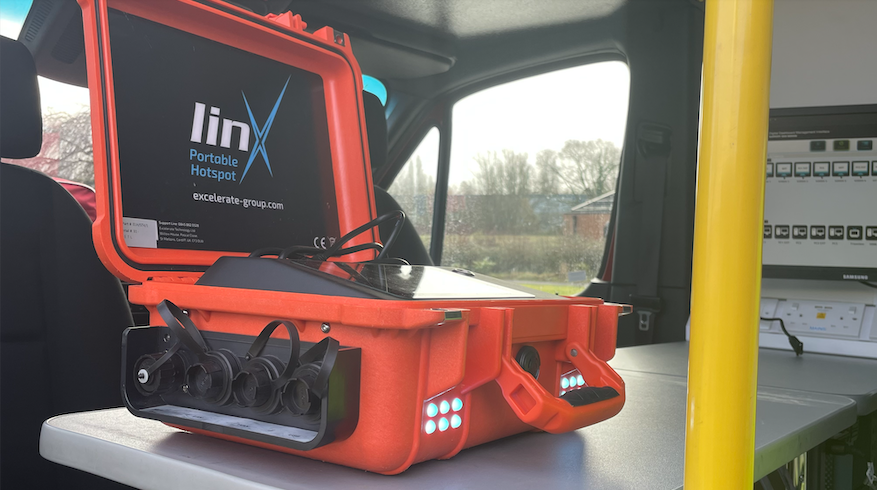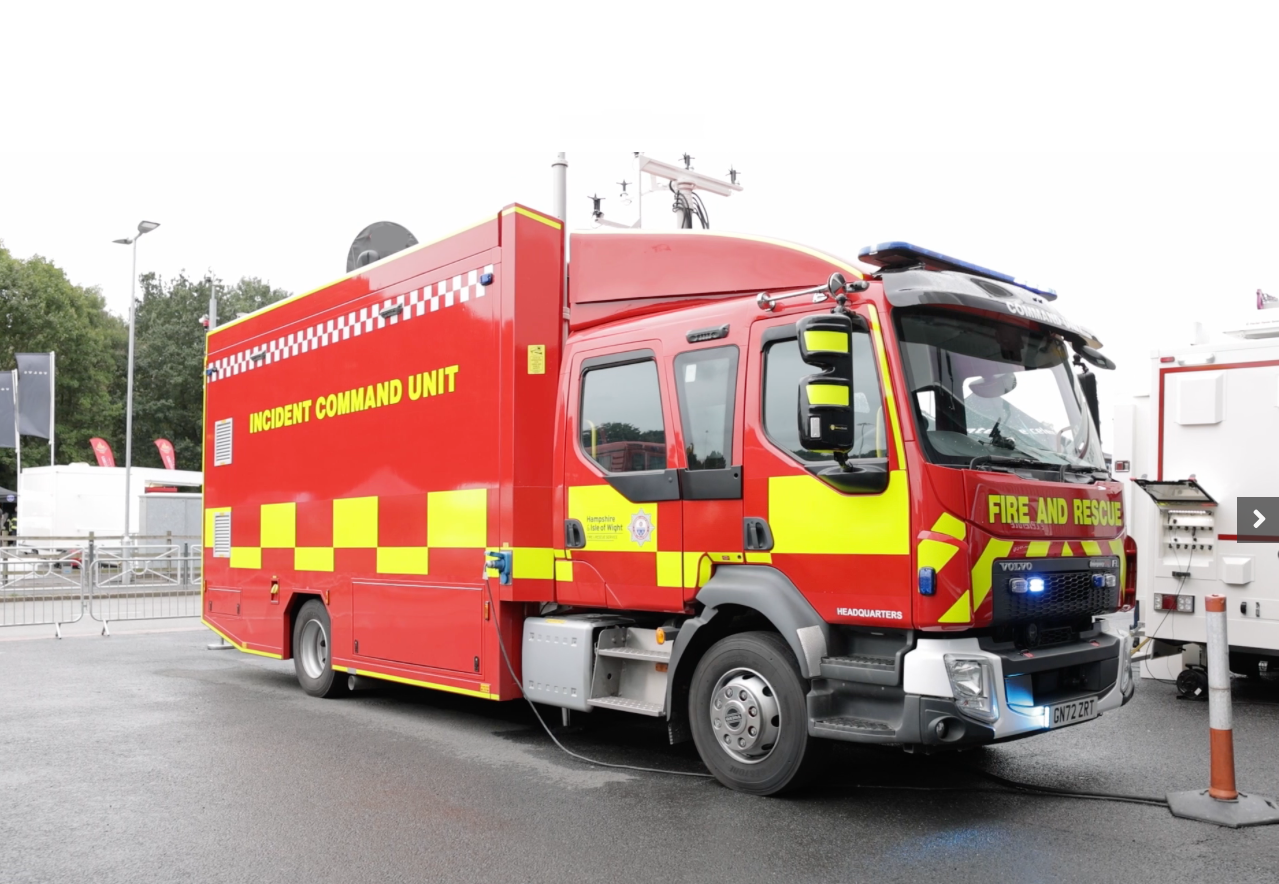In critical moments, the ability for firefighters to communicate and share real-time information is indispensable. Effective communication ensures that every responder is informed and coordinated, which is paramount in executing successful emergency operations. Recognising this, many of our fire service customers are integrating advanced communication technologies across their fleet.
Connectivity challenges
One of the significant challenges faced by firefighters is maintaining reliable communication in areas with poor connectivity. Fire incidents often occur in remote or rural areas where signal strength can be weak or non-existent. Additionally, in populated areas, networks can become overloaded, exacerbating the problem. During large-scale incidents, the stakes are even higher, as multiple units and agencies need to collaborate seamlessly. Here, traditional communication methods may falter, leading to delays or miscommunication, which can have dire consequences.
Situational awareness and tracking: One of the most significant challenges for fire and rescue services is maintaining situational awareness. As incidents constantly evolve, video streaming can be incredibly beneficial, providing a comprehensive view of the ongoing situation, thereby enhancing the overall response strategy. Knowing the exact location of personnel within a building or across an incident ground is also crucial for ensuring safety and effective coordination.
Multi-agency coordination: Recent incidents, including large-scale disasters and terrorist attacks, have highlighted weaknesses in communication between different emergency response agencies. The ability to seamlessly receive and share real-time data and operational information is critical for effective decision-making and coordinated response.
The need for advanced communication technology
Modern fire and rescue operations require more than just traditional equipment. The need for real-time information, reliable communication, and the ability to coordinate efforts has never been greater. Advanced communication technology can provide solutions that address these critical needs.
The Excell 4G LTE optimisation antenna addresses connectivity challenges head-on. Excell provides robust and reliable communication capabilities, even in areas where network coverage is typically poor. By incorporating these antennas into fire appliances and other vehicles, many fire services have ensured that their firefighters can maintain a steady stream of communication regardless of their location.


Northamptonshire’s next generation of fire appliances have been equipped with the Excell antenna. Nick Gayton from Northamptonshire Fire and Rescue Service commented, “Our fire appliances utilise the same cellular optimisation technology as our Joint Command Unit (JCU). This allows teams on the ground to remain connected throughout a large-scale incident. We are able to move around the incident ground while maintaining connectivity, which enables smoother information sharing.”
Buckinghamshire Fire and Rescue Service recently upgraded their Incident Command Unit (ICU) with the Excell antenna. Dave Thexton, ICT Manager added “Our priority is to continually improve our ability to respond swiftly and effectively to emergencies. The integration of the Excell into our ICU exemplifies our dedication to leveraging cutting-edge solutions for the safety of our community and the efficiency of our operations.”

Bridging communication gaps
The Linx Hub portable Wi-Fi hotspot has become increasingly popular among fire and rescue organisations for delivering both in-vehicle and incident ground connectivity. Linx Hub offers the added benefit of being deployed away from the vehicle, providing enhanced and extended communication capabilities. This effectively creates a Wi-Fi network that can be used anywhere within the incident ground, ensuring that all personnel have access to necessary communication networks.
The Linx Hub was initially developed in collaboration with Mid and West Wales Fire and Rescue Service, to significantly improve situational awareness and personnel tracking during various incidents, from industrial fires to water rescues. The need for this technology was underscored by the communication shortcomings highlighted in post-incident reports from events like the Manchester Arena bombing and the Grenfell Tower fire. These reports emphasised the critical importance of real-time data sharing and operational information for effective decision-making.
Since its inception, many other fire and rescue services including Hereford and Worcester have adopted the Linx Hub to enhance operational efficiency. Richard Cooper, Watch Commander stated “The integration of advanced connectivity solutions elevates our emergency response capabilities. With the Linx Hub, our drone teams can effortlessly stream footage and maintain communication with responders, both on-site and off-site, enabling us to adapt swiftly to dynamic situations. This capability allows for real-time streaming of drone footage, providing critical situational awareness to remote commanders.”
Lifeline from above: The role of satellite in modern firefighting
Satellite technology offers a crucial lifeline for fire and rescue operations, especially in areas with no existing coverage. In remote or disaster-stricken locations where traditional communication infrastructure is absent, satellite provides reliable, high-speed connectivity. This is essential for maintaining real-time communication and data exchange, enabling responders to access live video feeds, GPS navigation, and critical incident updates despite the lack of conventional coverage. The seamless integration of satellite terminals onto fire and rescue vehicles ensures that crews remain connected and informed, greatly enhancing their ability to coordinate efforts and manage emergencies effectively in even the most isolated or challenging environments.

Hampshire and Isle of Wight Fire and Rescue Service’s ICU equipped with integrated satellite technology, has been particularly effective during a spat of wildfires, providing aerial overviews and mapping data. This information helped commanders and tactical advisors allocate resources more effectively. Satellite technology ensures that all vital information can be relayed promptly, benefiting the overall incident management process.
Station Commander, Michael Carpenter highlights the impact of this technology: “Our ICU provides a platform for our commanders to access the crucial information they need to safely manage incidents. With this capability, we ensure that situational awareness and information from the incident site is effectively shared with other agencies, our headquarters, and senior commanders in real-time. This seamless sharing of information is made possible by the advanced connectivity and robust platform that our vehicle brings to each incident.”
The future of connected firefighting: Leveraging bonded hybrid connectivity
Bonded hybrid connectivity offers significant advantages for fire and rescue services, especially for onboard vehicles and remote teams operating in dynamic and unpredictable environments. As incidents unfold, responders often move through areas with varying network availability, which can severely impact critical communication and data transmission.
The Hybrid Edge Appliance combines multiple internet connections into a single, seamless link. For fire and rescue vehicles, this technology is essential as it aggregates bandwidth from diverse sources—such as satellite, cellular, and Wi-Fi networks—into a unified, high-speed connection. This ensures that responders have a fast and reliable internet connection, no matter what the circumstances.

In critical situations where every second counts, Hybrid Edge delivers the highest speed and lowest latency possible. This capability is crucial for real-time data transmission, and bandwidth intensive tasks such as live video streaming. The technology also ensures continuous connectivity with no downtime, thanks to the redundancy of multiple active connections.
By integrating different types of connections, bonded hybrid connectivity enhances the operational efficiency and reliability of fire and rescue operations. It ensures that vital resources and coordination with other units are always accessible, thereby improving both the safety and effectiveness of emergency responses.
Staying connected
The integration of advanced communication technology is crucial for enhancing situational awareness, improving multi-agency coordination, and ensuring continuous connectivity during fire and rescue operations. As demonstrated by fire services like Buckinghamshire, Northamptonshire, Hampshire and Isle of Wight, and more, these innovations are critical in improving response efficiency and safety.





